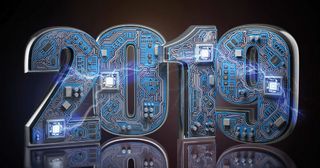As technology advances, costs are decreasing and access is increasing. This combination may allow for more widespread adoption of tech programs that are beginning to gain a foothold in education. Here are some predictions for technology in education for 2019 and beyond:
1. The continued push for coding in the classroom—Coding resources are becoming more plentiful and accessible. Code.org, for example, offers free, high-quality computer science activities. Coding in the classroom will continue to grow, particularly with younger students.
2. Virtual reality fades—Unless a less expensive method of delivering virtual reality resources in the classroom surfaces that can also provide high-quality and varied content, virtual reality, in its current form, may be on its way out.
3. 1:1 devices—The arrival of the Chromebook made it possible for students to have a device around $200. I predict cheaper devices will allow more schools to adopt and maintain 1:1 programs in the near future.
4. Learning with video games—This has been tried before. Does it work? It depends. Video games that are fun for students but also have an educational purpose could be significantly beneficial. The games found on Code.org and Minecraft for Education are examples of how this can be done right.
5. Increase in blended learning environments—This may be more of a long-term prediction, but it’s on the horizon. This could mean students completing most work outside of a traditional classroom and then meeting in person with a teacher to conduct in-person discussions and for hands-on projects to extend online learning. There are many possibilities for blended learning in both synchronous and asynchronous learning environments.
6. An increase in data-driven instruction—Web apps that track student data to drive instruction are already being used. As more are developed and become more affordable, I predict that many will jump on the bandwagon and begin intently tracking data. The fear is that teachers will be teaching (more so than they are already) almost completely to standardized tests in an attempt to prove that they put the district’s data tracking system to good use. While tests are important, there’s more to education than assessments.
7. Wearable technology—I predict this trend will continue to grow. Wearable devices could be excellent classroom tools if implemented carefully and correctly. The main barriers now seem to be price and training. Wearable technology also has a whole host of benefits in the area of special education.
8. 3D Printing—Prices are already becoming more reasonable for 3D printers and supplies, and I could foresee every school having a 3D printer for its STEM classes. The benefits of learning and implementing the design process are significant.
9. Robotics—Similar to 3D printing, the design process of making and tinkering with robots and robotic components is beneficial to students of all ages and can spark student interest in STEM careers. The best part is that cost doesn’t necessarily prohibit integration. Some robots can be constructed with as little as five dollars’ worth of materials.
10. Increased vocational training—With mounting student debt and a sometimes difficult job market facing college graduates, I foresee an increase in students enrolling in vocational programs in their high schools. There are many jobs, for example, for trained mechanics, communications technicians, IT specialists, Web designers, cable installers, plumbers, carpenters, and electricians.
Steven Lahullier is an elementary school technology teacher at the Robert Gordon School in Roselle Park (NJ) and doctoral candidate in the Educational Technology Leadership program at New Jersey City University.

